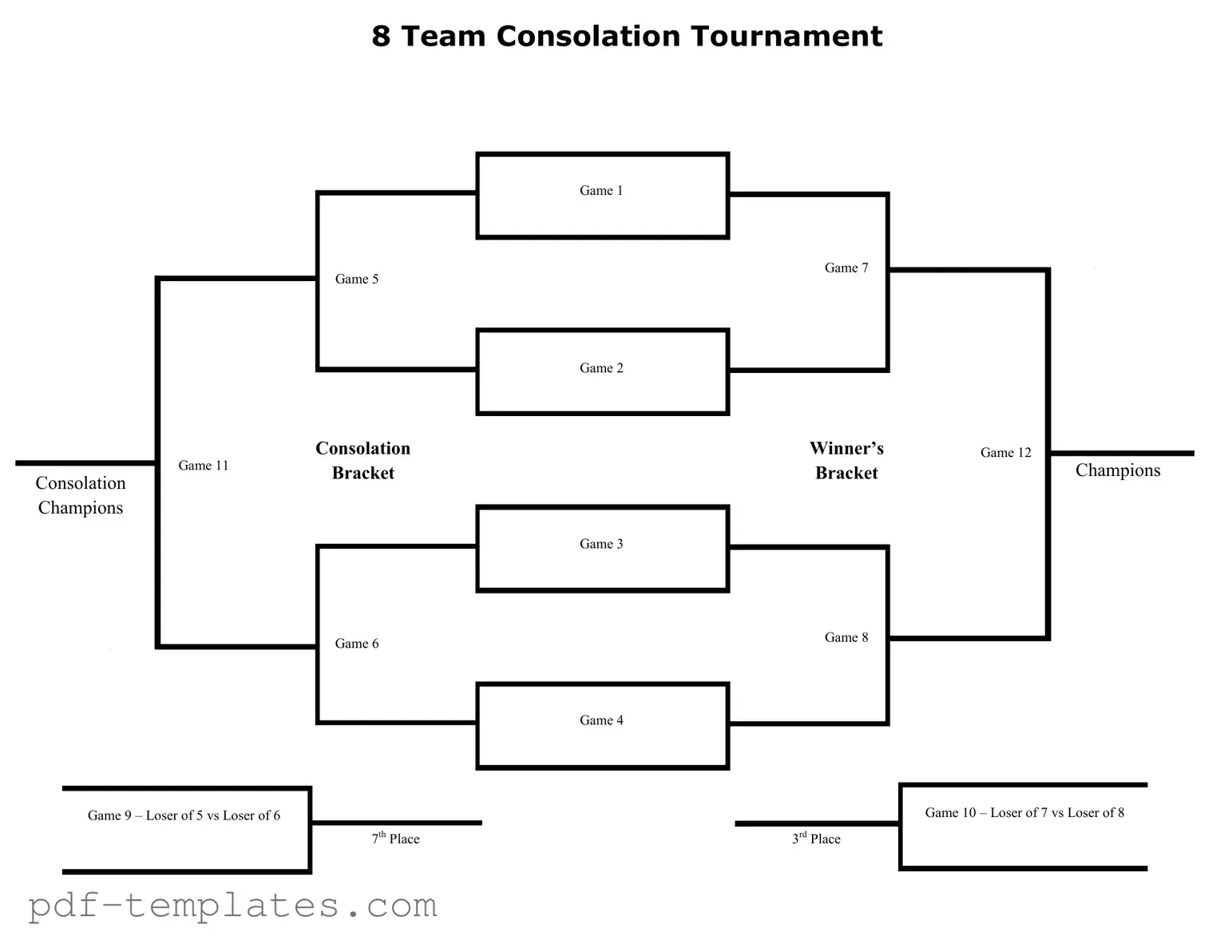The Tournament Consolation Bracket form shares similarities with a standard tournament bracket form. Both documents outline the structure of a competition, detailing matchups and progression through various rounds. The standard tournament bracket typically includes information on winners advancing to subsequent rounds, much like the consolation bracket, which highlights the path for teams that did not win their initial matches. Each bracket serves to organize the tournament flow and clarify which teams face off against each other.
A league standings form is another document that aligns closely with the Tournament Consolation Bracket form. Both serve to track the performance of teams throughout a competitive season. While the standings form lists wins, losses, and ties, the consolation bracket focuses on the outcomes of specific matches within a tournament. Each document provides valuable insights into team performance, helping participants and fans understand the competitive landscape.
For those looking to buy or sell a recreational vehicle, understanding the documentation required is essential, particularly the Texas RV Bill of Sale. This legal form not only facilitates the transfer of ownership but also provides critical information for both parties involved in the transaction. To ensure a clear and proper exchange, you can find the necessary template at https://documentonline.org/blank-texas-rv-bill-of-sale.
The match schedule document is similar in that it outlines when and where games will take place. Just as the Tournament Consolation Bracket indicates the sequence of games, the match schedule provides dates and times for each matchup. This ensures that participants and spectators are informed about the timing of events, which is crucial for planning and attendance.
A player roster form also shares a connection with the Tournament Consolation Bracket. Both documents are essential for organizing a tournament. The roster form lists the players on each team, while the bracket form shows how those teams will compete against each other. Each serves to keep participants informed about team compositions and match pairings, fostering a better understanding of the tournament dynamics.
The score sheet is another related document. It captures the results of each game played, similar to how the Tournament Consolation Bracket reflects the outcomes of matches. While the bracket shows the progression of teams, the score sheet provides the specific scores, allowing for detailed tracking of performance over the course of the tournament.
A registration form for participants also resembles the Tournament Consolation Bracket form. Both documents are vital for the organization of a tournament. The registration form collects essential information about each team and its members, while the bracket form organizes how those teams will compete. Each document plays a role in ensuring a smooth tournament experience.
A rules and regulations document is another important piece that complements the Tournament Consolation Bracket form. While the bracket outlines the matchups, the rules document specifies how the games will be played. Together, they provide a comprehensive understanding of the tournament structure and the expectations for all participants, ensuring fair play and clarity throughout the event.
Finally, a feedback form may also be considered similar. While it is not directly related to the structure of the tournament, it serves to gather insights from participants about their experiences. Like the Tournament Consolation Bracket, which helps teams understand their standings and next steps, the feedback form helps organizers improve future tournaments based on participant input. Both documents contribute to the overall success and enjoyment of the event.
